
CINEMATIC ALLUSIONS TO LITERARY WORKS
METROPOLIS (1927)
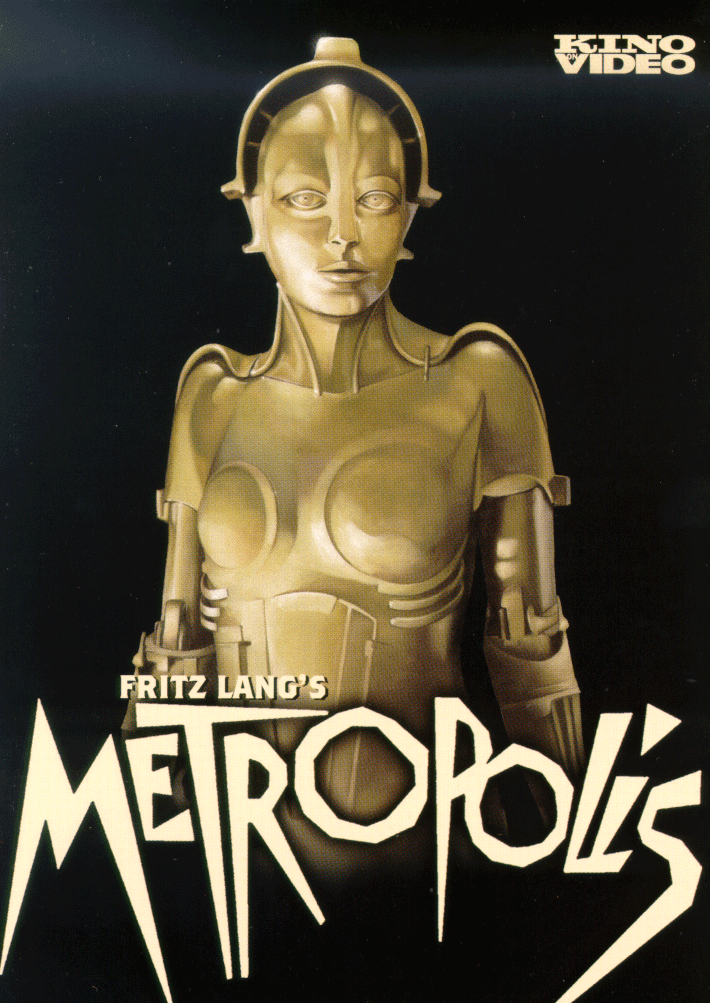
The film sets designed by Erich Kettelhut provide visual blue prints of the futuristic city of Metropolis and the subterranean workers' city. New York skyscrapers provided Lang with the inspiration for the futuristic vertical towers of Metropolis; however, within the details of Lang's futuristic city are discernible geometric patterns, mixtures of ancient and expressionist modern buildings, and new/found architectural vocabularies. These fragmented images of Metropolis can be found in many of today's cities.
One striking resemblance is between the opening animated sequence of dawn over the city and Pennzoil Plaza in Houston by Philip Johnson & John Burgee. The triangular stepped building of Pennzoil Place distorts the backdrop of downtown Houston with a sinister sky just as it does in the movie.
From Frank Lloyd Wright's Beth Sholom Synagogue, William Van Alen's Chrysler Building and CÚsar Pelli's Petronas Towers, one can easily identify traces of "The Tower of Babel." Massimo Scolari imagines machines as tetragonal enigmas of a real world that would best be suited to a mythical place. Perhaps because of this mythical reference, Scolari in his Oltre il Cielo project coincidentally matches the tower image in the legend of the Babel sequence. One has to wonder, in the realm of reality, if the visions of the cinematic allusions are defined by our built environment in which we live or if our built environment is inspired by these cinematic visions of the proposed future. Lang's cinematic visual allusions truly intertwine the past, the present and the future of our built environment.
M.T. Chang, Ph.D.
Assistant Professor, School of Architecture,
Urban Design and Landscape Architecture
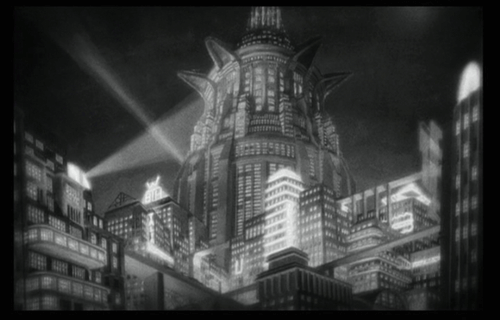 |
One of the grand buildings of the city of Metropolis illuminated at night. |
In the Beth Sholom Synagogue, designed by Frank Lloyd Wright in 1938, we witness the means by which a construction of steel, concrete and glass, metals, and plastics has been transmuted into an architectural expression of light as form. It was erected in Elkins Park, Pennsylvania in 1954. |
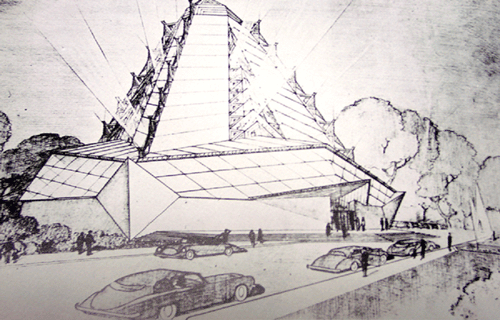 |
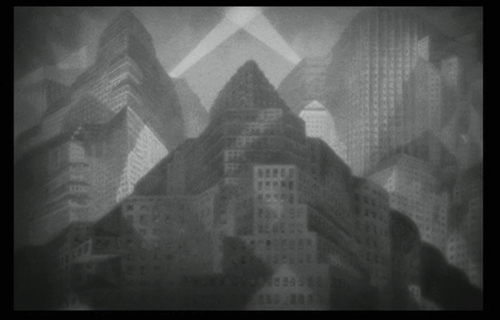 |
This design sketch for the film Metropolis by Erich Kettelhut depicts a vision of the city with a dense conglomeration of buildings rising like a pyramid. |
The sleek twin stepped-pyramidal towers of the Pennzoil Place designed by Philip Johnson & John Burgee nearly touch at the inner edge and are joined by the lobby roof below. The shape of this building constructed in Houston in 1976 looks like the Eric Kettlelhut design of the building rising like a pyramid from 1927. |
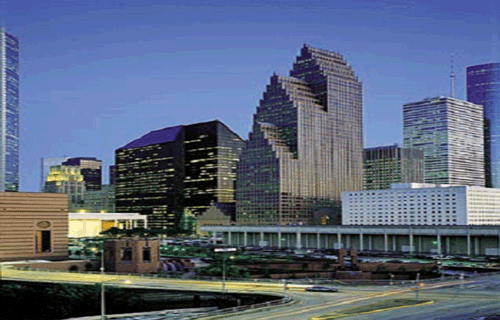 |
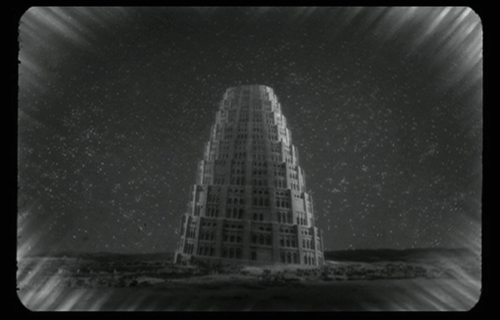 |
The Tower of Babel seen from a distance in Metropolis. |
The angel, with its blue wings unfurled, flies toward the clouds of time, from which emerges the ziggurat which holds the traces of a language that perhaps can be deciphered in a new sense. It is precisely in this painting that we are able to understand the technical and formal importance of Massimo Scolari's anti-perspective representation, along parallel axes. Scolari depicted this almost surrealist vision in this 1982 watercolor titled Oltre Il Cielo (Beyond the Sky). |
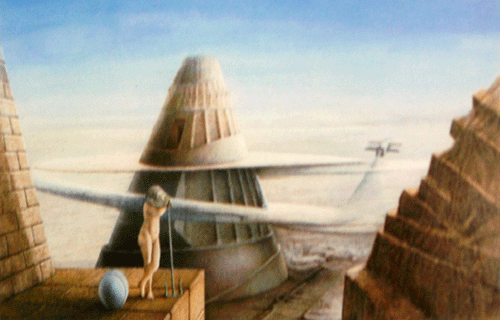 |
Bibliography
Elsaesser, Thomas. Metropolis. England: British Film Institute, 2000.
Harbou, Thea von. Metropolis. Holicong, Pennsylvania: Wildside Press, 2003.
Minden, Michael. "Fritz Lang's Metropolis and the United States." German Life and Letters 53.3 (2000): 340-350.
Morris, Nigel. "Metropolis and the Modernist Gothic." In Smith, Andrew and Jeff Wallace, eds. and introd. Gothic Modernisms. Houndmills, England: Palgrave, 2001. 188-206.
| Previous Movie | Return to main page | Next Movie |
Copyright © The City College Library www1.ccny.cuny.edu/library |
||